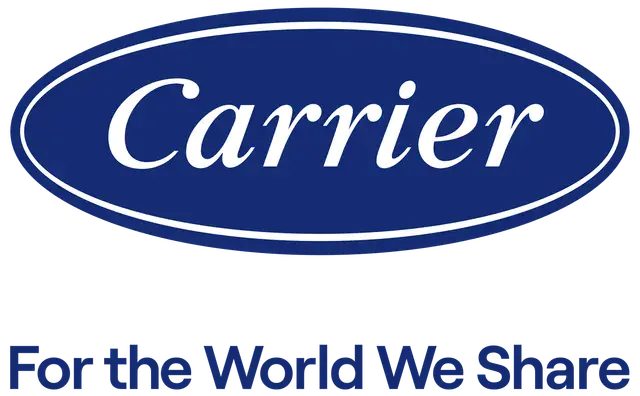Understanding VRF Systems in Vestavia Hills
Variable Refrigerant Flow (VRF) systems represent one of the most advanced HVAC technologies available for commercial and residential properties in Vestavia Hills, AL. These sophisticated climate control systems offer unparalleled efficiency and comfort by allowing simultaneous heating and cooling in different zones of a building. At Stegall, we specialize in designing, installing, and maintaining VRF systems that meet the unique demands of Alabama’s climate while providing exceptional energy savings and precise temperature control.
VRF technology operates on a fundamentally different principle than traditional HVAC systems. Instead of using ductwork to distribute conditioned air throughout a building, VRF systems use refrigerant as the cooling and heating medium, which flows directly from outdoor units to multiple indoor units. This direct exchange of thermal energy eliminates the efficiency losses associated with ductwork and allows for incredibly precise temperature control in individual zones. The system continuously adjusts the flow of refrigerant to each indoor unit based on real-time demand, ensuring optimal comfort while minimizing energy consumption.
Technical Specifications and System Components
A typical VRF system consists of several key components that work together to deliver exceptional performance. The outdoor condensing unit serves as the heart of the system, housing advanced inverter-driven compressors that can modulate their speed to match the exact cooling or heating load required at any given moment. These compressors can operate at capacities ranging from 10% to 100%, providing remarkable efficiency compared to traditional on/off systems that cycle between full capacity and complete shutdown.
Indoor units in VRF systems come in various configurations to suit different architectural requirements and aesthetic preferences. Wall-mounted units offer discreet installation options for individual offices or rooms, while ceiling cassettes provide uniform air distribution in larger spaces. Ducted units can be concealed above ceilings for applications where visible equipment is undesirable, and floor-standing units work well in spaces with limited wall or ceiling access. Each indoor unit contains its own electronic expansion valve, which precisely controls refrigerant flow based on the specific temperature requirements of that zone.
Energy Efficiency and Cost Savings
VRF systems deliver exceptional energy efficiency that translates directly into lower operating costs for property owners in Vestavia Hills. Industry statistics show that VRF systems can achieve efficiency ratings of up to 30 IEER (Integrated Energy Efficiency Ratio), significantly outperforming traditional rooftop units or split systems. This superior efficiency stems from several factors, including variable-speed compressor operation, heat recovery capabilities, and the elimination of duct losses.
The heat recovery feature of VRF systems represents a particularly compelling advantage for mixed-use buildings or facilities with varying thermal loads. When some zones require cooling while others need heating, the system can transfer heat from areas being cooled to those requiring warmth, essentially providing free heating by recycling waste heat. This capability proves especially valuable during Alabama’s transitional seasons when morning temperatures might call for heating while afternoon sun creates cooling demands in different parts of the same building.
Installation Process and Considerations
Installing a VRF system requires careful planning and expert execution to ensure optimal performance and reliability. Our team at Stegall begins each project with a comprehensive load calculation and system design that accounts for factors such as building orientation, insulation levels, occupancy patterns, and specific comfort requirements for each zone. We utilize advanced modeling software to simulate system performance under various conditions, ensuring that the selected equipment will meet both current and future needs.
The installation process involves several critical steps that demand precision and expertise. Refrigerant piping must be properly sized and installed with appropriate insulation to prevent energy losses and ensure reliable operation. Unlike traditional systems that use large ductwork, VRF systems require relatively small refrigerant lines that can be routed through existing building cavities with minimal disruption. This characteristic makes VRF systems particularly attractive for retrofit applications in older buildings where installing new ductwork would be prohibitively expensive or architecturally challenging.
Maintenance Requirements and Long-Term Performance
Proper maintenance plays a crucial role in ensuring the longevity and efficiency of VRF systems. We recommend establishing a comprehensive maintenance program that includes regular filter cleaning or replacement, coil cleaning, refrigerant level checks, and system performance verification. Our 24 hours a day, 7 days a week availability ensures that any issues can be addressed promptly, minimizing downtime and maintaining optimal comfort conditions.
Modern VRF systems incorporate sophisticated diagnostic capabilities that allow for proactive maintenance and rapid troubleshooting. Many systems can communicate performance data and fault codes directly to service technicians, enabling remote monitoring and predictive maintenance strategies. This technology helps identify potential issues before they result in system failures, reducing emergency repair costs and extending equipment life.
Applications and Benefits for Vestavia Hills Properties
VRF systems offer compelling advantages for various property types throughout Vestavia Hills, from office buildings and retail spaces to hotels and multifamily residential complexes. The ability to provide individualized comfort control makes these systems particularly well-suited for buildings with diverse occupancy patterns or varying thermal loads.
- Commercial office buildings benefit from the ability to condition only occupied spaces, reducing energy waste in vacant areas
- Hotels and hospitality facilities can provide guests with precise room temperature control while minimizing energy consumption in unoccupied rooms
- Medical facilities appreciate the superior air quality and precise temperature control essential for patient comfort and equipment operation
- Educational institutions can maintain optimal learning environments while managing energy costs across multiple buildings
The quiet operation of VRF systems represents another significant advantage, particularly in noise-sensitive environments such as hotels, hospitals, or high-end residential applications. Indoor units operate at sound levels as low as 25 decibels, creating peaceful environments conducive to productivity, healing, or relaxation.
Future Trends and Technology Advancements
The VRF industry continues to evolve with technological innovations that enhance performance, efficiency, and user experience. Emerging trends include integration with building automation systems, enhanced connectivity for remote monitoring and control, and the development of systems using low-global-warming-potential refrigerants. These advancements ensure that VRF technology will remain at the forefront of HVAC solutions for years to come.
As energy codes become increasingly stringent and building owners seek to reduce their carbon footprint, VRF systems offer a proven path to achieving sustainability goals while maintaining superior comfort. Stegall remains committed to staying current with these technological advances, ensuring that our commercial, industrial and residential HVAC, plumbing, and electrical support services incorporate the latest innovations to benefit our customers throughout Vestavia Hills and the greater Birmingham area.


